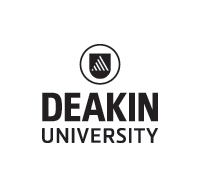MAF210 - Quantitative Methods for Business
Unit details
| Year: | 2023 unit information |
|---|---|
| Enrolment modes: | Trimester 2: Burwood (Melbourne), Warrnambool, Waterfront (Geelong), Online |
| Credit point(s): | 1 |
| EFTSL value: | 0.125 |
| Unit Chair: | Trimester 2: Abdul Hayat Muhammad |
| Prerequisite: | Nil |
| Corequisite: | Nil |
| Incompatible with: | Nil |
| Typical study commitment: | Students will on average spend 150 hours over the trimester undertaking the teaching, learning and assessment activities for this unit. |
| Scheduled learning activities - campus: | 3 face-to-face contact hours per week (1 x 1.5 hour class and 1 x 1.5 hour seminar per week) |
| Scheduled learning activities - online: | Online independent and collaborative learning activities including 1 x 1.5 hour weekly scheduled online seminar |
Content
The unit covers basic quantitative methods and techniques that can help students use financial and nonfinancial data to make business-related decisions. It covers topics related to basic statistics and probability concepts, probability distributions, capital budgeting including discounted cash flow analysis, parameter estimation and hypotheses testing, capital asset pricing theory, and cross-sectional and time series regression analysis. The unit will also explore Excel-based numerical techniques used by business analysts in a practical environment to facilitate the decision-making processes.
| ULO | These are the Learning Outcomes (ULO) for this unit. At the completion of this unit, successful students can: | Deakin Graduate Learning Outcomes |
|---|---|---|
| ULO1 | Identify the critical elements in statistical analysis used in decision-making, and analyse statistical data in hypothesis testing. | GLO1: Discipline-specific knowledge and capabilities GLO5: Problem solving |
| ULO2 | Apply commonly used quantitative methods to evaluate projects or corporate value using discounted and non-discounted cash flow methods. | GLO1: Discipline-specific knowledge and capabilities GLO4: Critical thinking |
| ULO3 | Apply commonly used quantitative methods and appropriate digital technologies to collect and analyse financial and nonfinancial data. | GLO3: Digital literacy GLO5: Problem solving |
| ULO4 | Apply the theory of returns and risk trade-off proposed by the capital asset pricing model and models with additional risk factors. | GLO1: Discipline-specific knowledge and capabilities GLO5: Problem solving |
| ULO5 | Conduct regression analysis and interpret the results from data analysis including the test of the capital asset pricing model. | GLO4: Critical thinking GLO5: Problem solving |
These Unit Learning Outcomes are applicable for all teaching periods throughout the year.
Assessment
| Assessment Description | Student output | Grading and weighting (% total mark for unit) | Indicative due week |
|---|---|---|---|
| Assessment 1: (Individual) Written Response Test (online) | 60 minutes | 20% | Week 5 |
| Assessment 2: (Individual) Report (Analytical) | 2000 words | 30% | Week 9 |
| Assessment 3: Examination (open book) | 2 hours | 50% | End-of-unit assessment period |
The assessment due weeks provided may change. The Unit Chair will clarify the exact assessment requirements, including the due date, at the start of the teaching period.
Learning Resource
The texts and reading list for the unit can be found on the University Library via the link below:MAF210 Note: Select the relevant trimester reading list. Please note that a future teaching period's reading list may not be available until a month prior to the start of that teaching period so you may wish to use the relevant trimester's prior year reading list as a guide only.
Unit Fee Information
Click on the fee link below which describes you:
